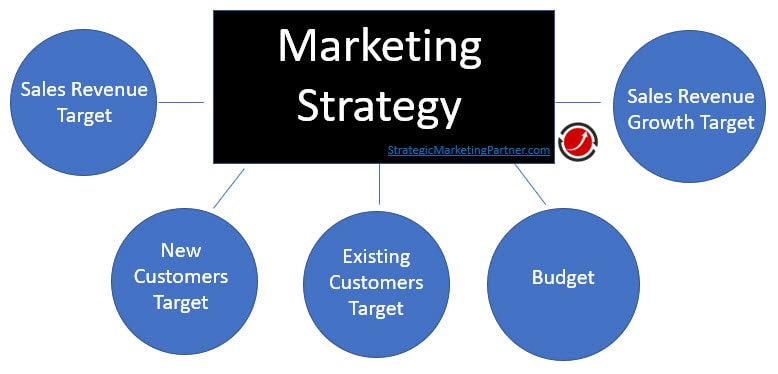What type of loan is best for starting a business with no money?
Do you need a loan to start a business? Looking at the best type of loan options for your start-up? […]
Read More »Become a successful marketing consultant: Learn more

If you could wave a magic wand and have three years pass…
What do you want to end up with?
Marketing strategy is important because it clarifies the reality of where you are now and the vision for where you want to be in the future. Your marketing strategy provides the actionable framework for the vision of your organization.
Strategy is the master purpose that your business and career is all about.
Most people go about it completely opposite. They first think about endless mind-numbing actions and tactics and really pay no attention to the big picture strategy unless they stumble upon it.
Strategy is the explanation of the entire operating approach your business and career is following and why and how every element of it integrates, advances, and deploys the big picture outcome that you are after.
There are many ways to craft your marketing strategy.
So, how do you put your strategy on the right track for this year and beyond?
| √ |
Marketing Strategy Checklist: |
| What is the long term goal or vision (3 years)? | |
| What is the short term goal or vision (less than 12 months)? | |
| Will you be acquiring new customers? | |
| If yes, how many do you need and what % growth is this over last year? | |
| Will you be retaining existing customers? | |
| If yes, what is your KPI for this metric? | |
| What is the approximate resources allocation (%'s of total) of gaining customers and retaining customers? | |
| What is the sales revenue target? | |
| What is the % of growth in sales revenue target over last year? | |
If you have an existing business, a great exercise to do first is a SWOT analysis. For some companies, another excellent analysis is Porter’s Five Forces. These analyses will empower you to think deeply about where you are now and what roadblocks may be in your way.
Your marketing strategy is developed once you have some structure of what you want your organization to become. Three criteria are important to consider as you develop your strategy:

During your research and analysis, as you think about your marketing strategy, pay particular attention to your Opportunities and Strengths, as this will help you to objectively clarify your strategy and see how it fits within your overall business strategy.
Once you have some structure in mind, you now have to decide what the best method is for you to move forward.
It’s this future forward-thinking that will lead you to develop your marketing strategy.
The marketing strategy is the framework for bringing the vision of the future of your organization to reality. The marketing plan is the set of tools, tactics, calendar and budget needed to carry out your marketing strategy.
Once you figure these things out, then you need to think through your tactics. This is normally done through building your Marketing Mix and carefully evaluating your Key Performance Indicators (KPIs).
In other words, what are the best marketing strategies and tactics to achieve the big outcome you’re after?
By being strategic in your approach to marketing, you will already have an edge over your competition. That’s because, by definition, you know where you are and more importantly you will already have a clear vision for where you want to be.
But even more important than this, you have a plan for how to make this vision a reality.
Once you’ve decided on your strategy, now your tactics come into the equation.
Your tactics are the approaches, methods, steps and vehicles that you use to accomplish your big picture strategy.
And it's this clearly thought-out plan that bridges the short range goals to the long term strategic marketing plan.
You see, this is how short term and long term marketing goals work in union.
And is another reason why knowing your KPIs are core to your marketing strategy process.
Lastly, as we polish our strategic plan, we can now think about the tools needed to develop our marketing plan. And to do this, we need to go full circle back to the basics of marketing and do your initial research. Here’s how you get started with your marketing strategy and into your marketing plan:
As always, if you need any assistance, Your Strategic Marketing Partner is happy to help!